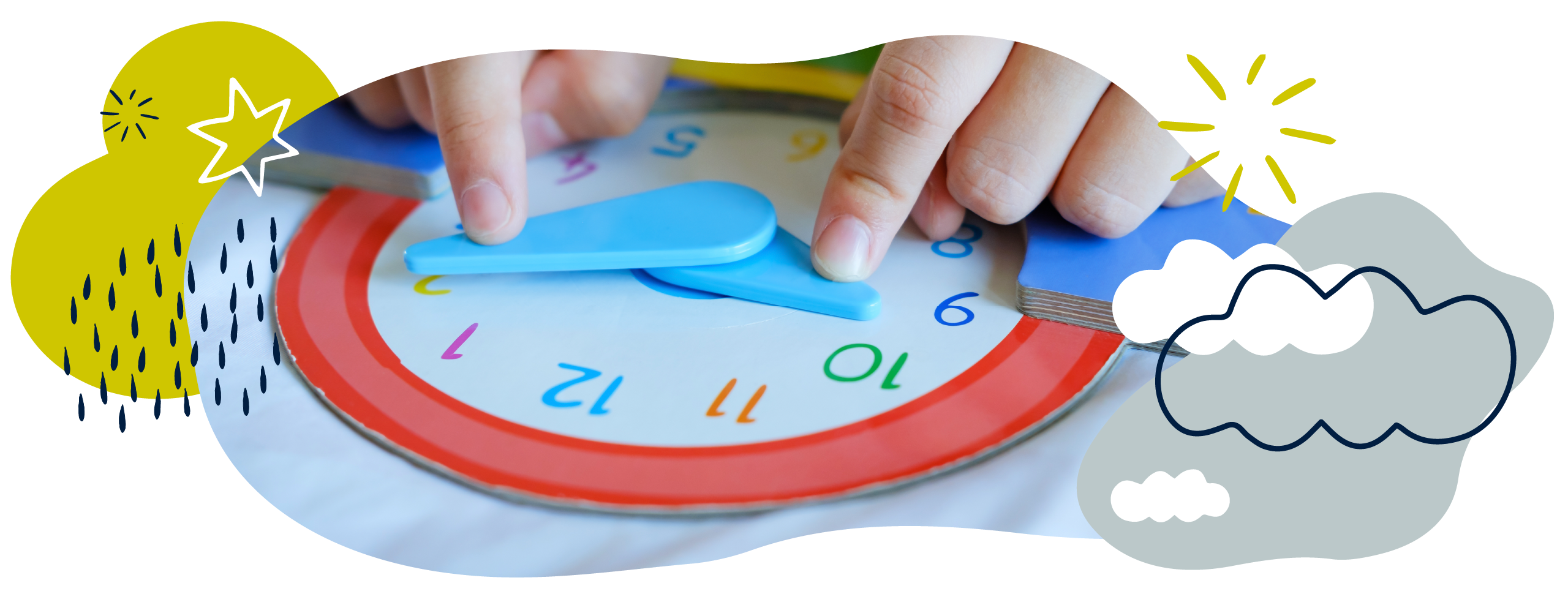Learning to tell the time
Telling the time is an important skill in everyday life, but we all know how tricky it is to learn despite the number of devices we have in our homes that keep us punctual.
Before your child will be able to tell the time on a clock, they will need to grasp how time relates to their own experiences. You can start to increase their awareness of time from a young age by doing some simple activities and games.
How to help your child at home
You don’t need to be an expert to support your child with maths! Here are five simple but effective ways to help your child learn to tell the time:
1. Talk time
Draw attention to time by mentioning the time at different points in the day. For example, you could say, ‘it’s 5 o’clock – time for tea,’ or ‘it’s 7 o’clock – time for a bath.’
2. Clocks at home
Ovens, phones, microwaves, television and computers all tell the time, but the best way of learning how to tell the time and, importantly, understanding how time passes is by using analogue clocks.
With little ones, start with analogue clocks rather than digital clocks. This is what they will be doing in school. Watch the hands move from seconds to minutes and then to hours, focusing on telling time to the hour and half hour.
It’s very important that children can see clocks around the home, so put a clock in your child’s bedroom. Ideally it should have a clear hour hand and minute hand as this will help them to understand that the short hand shows the hour and the long hand shows the minutes.
3. Five, sixty and 24 – Know the numbers of time
Although multiples of 10, 100 and 1000 are key numbers when measuring, time is focused on 60. Make sure your child is confident with numbers and counting from 1–60 as this will make telling the time easier.
Practising the five times table will also be a big help.
4. Get out and about
When you’re out and about with your child, look for analogue clocks and digital clocks. Practise reading times and converting them to 12- or 24-hour times. You could also use timetables to solve problems – for example, finding when the next bus will arrive or how long a train journey will take.
5. Make time for fun
There are lots of opportunities to have fun when learning to tell the time. Have a go at some enjoyable activities that include measuring time, for example:
-
- use a timer for baking
- play a board game with a sand timer
- use a stopwatch to time a race or challenge
Want more?
To help your child’s learning further, you may want to watch some of the videos included within our dedicated maths library. If you’re looking for more ideas to support learning at home, head over to our maths blog to explore articles full of top tips and fun activities.
What your child will learn at school
Your child should be taught to tell the time at school in maths from Year 1. However, there isn’t much time at school to practise this skill, so practising at home is important.
Year 1 pupils should be taught to:
-
- tell the time to the hour and half past the hour
- draw the hands on a clock face to show these times
Year 2 pupils should be taught to:
-
- tell and write the time to five minutes including quarter past / to the hour
- draw the hands on a clock to show these times
- know the number of minutes in an hour and hours in a day
